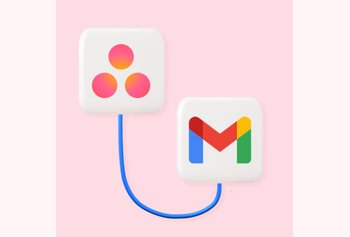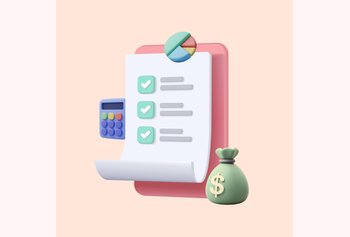Google Apps and Gmail Limits: What Everyone Needs to Know

Table of contents
Like any other cloud / SAAS offering, Google imposes limits on various functions such as the number or emails you can send every day, or the size of a spreadsheet. This is done, in Google’s words, to ‘keep our systems healthy and your accounts safe’.
While most small businesses are unlikely to ever come up against these limits, it’s within the realm of possibility that this happens. For example, your sales team may suddenly discover that they’re not being allowed to send out any more emails, or your product design department may run out of storage space.
As an administrator tasked with ensuring your users enjoy unfettered access to all business IT systems they need to carry out their responsibilities, this is something you should be aware of – so you can inform your users well in advance, and can also take steps to ward off or mitigate the effects of any service suspension.
In this article, we’ll examine the limits and restrictions Google places on various Google Apps offerings, from Gmail and Google Drive to Contacts and the Gmail API.
Table of Contents
- 1. Gmail limits
- 2. Gmail Label and Filter Limits
- 3. Google Apps storage limit and Google Drive restrictions
- 4. Google Apps limits and usage quotas
- 5. Usage quotas for the Google Apps API
- 6. Google Workspace Account Limitations
- Handling Account Limit Warnings and Suspensions
1. Gmail limits
Gmail imposes a few restrictions for all users in terms of sending, receiving, and forwarding emails and attachments. Here’s a glimpse of the limitations:
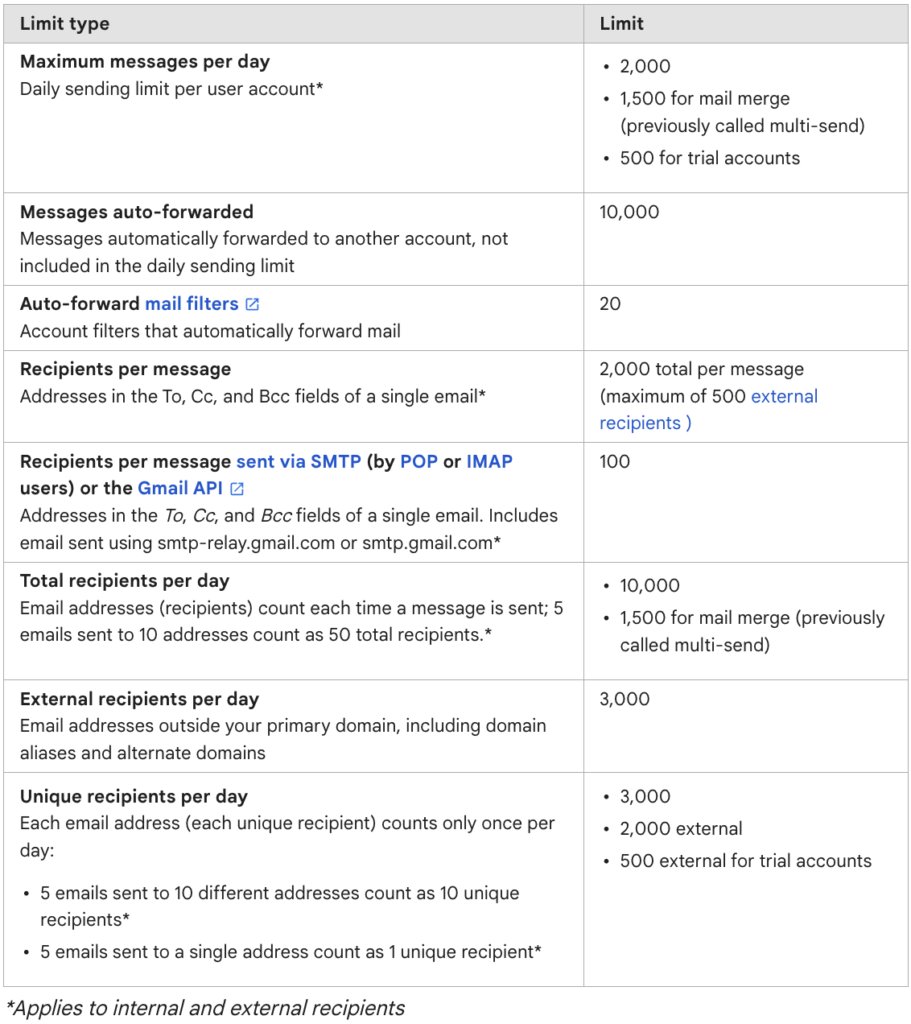
I. Sending & Receiving Limits in Gmail
Gmail lets users send 2,000 unique emails daily. However, in total, emails can be sent out to a maximum of 3,000 individual recipients per day. Also, keep in mind that a single email can be sent out to a maximum of 500 recipients per day.
Google Apps users can receive up to 60 messages each minute, with a maximum of 3600 messages each hour and 86,400 in any 24-hour period.
Note: For sending large amounts of email (as part of a mailing list or for an email sales campaign),it is recommended that your users turn to GMass or third-party offerings on the Google Apps marketplace.
Having trouble managing a large number of emails? Hiver’s Shared inbox feature will make email management effortless. Know more.
II. Bandwidth & Sync limits in Gmail
Google also sets bandwidth restrictions on your usage. If you’re using the web email client, you can download 750MB each hour and a maximum of 1250MB each day. At the same time, uploads are capped at 300MB per hour and 1500MB per day.
Apart from this, you should also be aware of the 25MB attachment limit for every Gmail message. Using Google Drive or other services such as Dropbox is recommended for transferring large amounts of data or attachments.
Note: The bandwidth consumed may not be immediately evident as this is affected by the other apps you use – the Gmail mobile app, Google Apps Sync for Outlook, and the Gmail Offline app for Chrome will all contribute towards this limit.
III. IMAP and POP Limits in Gmail
Usage via IMAP clients is subject to other restrictions as well. For example, messages can be sent to only up to 100 recipients at once (including To, CC, and BCC fields). Additionally, bandwidth restrictions limit the data you can download from the servers daily – 2500MB (IMAP) and 1250MB (POP).
Recommended Read
Productivity Handbook for Google Workspace Users
2. Gmail Label and Filter Limits
Gmail provides powerful filtering and labeling options to help users organize and manage their emails efficiently. Filters automatically categorize incoming messages, while labels allow users to group emails for easier navigation.
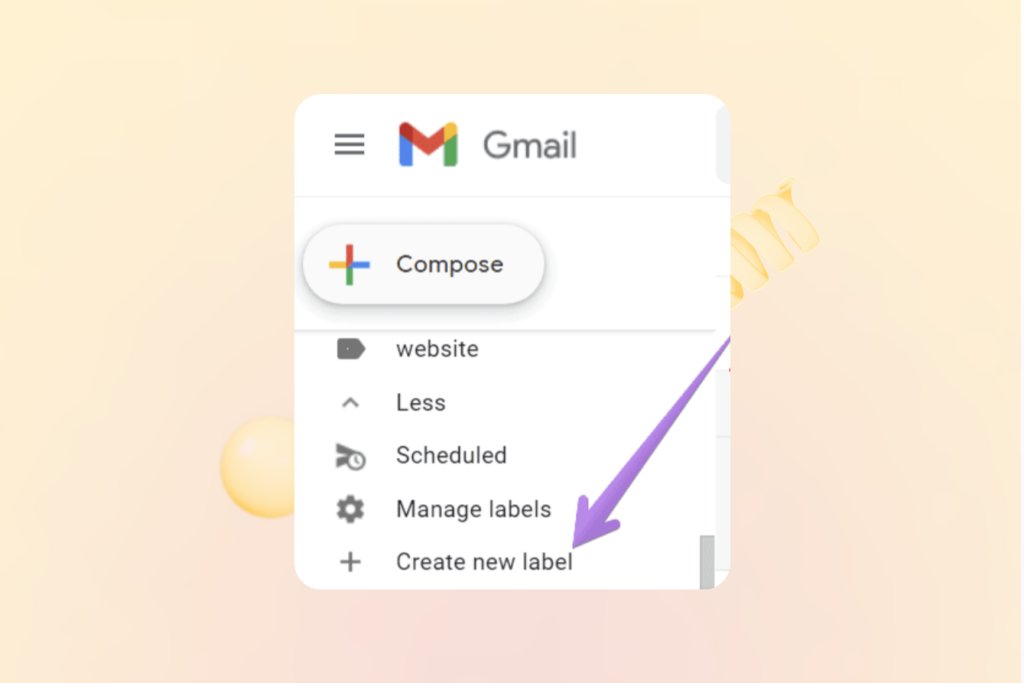
I. Maximum number of labels and filters allowed in Gmail
Gmail labels are used to categorize emails. It acts as a folder through which users can organize their mailbox. Google Workspace allows every user to create a maximum of 10,000 labels.
However, Google recommends creating up to 500 labels. This is because the list may take longer to load if a user creates more than 500 labels.
Google filters help you manage all incoming mail. With filters, you can automatically send an email to a label or you can perform any of the following actions – star, archive, delete or forward the message by setting up specific rules.
A user can create a maximum of 10,000 filters.
II. How to streamline filters and labels?
- Use Broad Filters: Create filters with broad criteria that can be applied to multiple types of emails at once. For example, rather than creating separate filters for different senders, combine them into one filter using their domain names.
- Avoid Overlapping Filters: Avoid creating filters with similar or overlapping criteria. Overlapping filters might lead to emails being categorized into multiple labels or archived unintentionally.
- Archive vs. Delete: Consider using “Archive” instead of “Delete” for filters that automatically handle incoming emails. Archiving allows you to access emails later if needed, whereas deleted emails might be challenging to recover.
- Prioritize Important Filters: Arrange filters in order of priority to ensure critical emails are filtered correctly.
- Regularly Review and Update: Review your existing filters and labels to ensure they align with your email management needs. Remove or modify filters that are no longer necessary.
- Utilize Search Instead: For specific one-time filtering needs, consider using Gmail’s search operators instead of creating permanent filters. Advanced search operators can help you find emails based on complex criteria without using up filter slots.
For example, say you want to filter out all emails from one of your vendors in the last month and contain attachments. Instead of creating a filter for such conditions, you can use a powerful combination of search options present in the right side of the search bar in gmail. Fill in the required parameters like, “from: [email protected]”, “Date within: 2023-07-01”, and enable the checkbox “Has Attachment”.
This way, Gmail will quickly display all emails from your vendor, sent after July 1, 2023, that have attachments – no need to clutter your filters with multiple rules.
- Nest Labels: If you have many labels, consider nesting them under broader categories. This approach helps keep your label list more manageable and organized.
For instance, suppose you work in a customer support team, and you receive various types of support inquiries. Instead of having a long list of separate labels for each type of issue, you can create a main label as “Customer Support”. Then, under this parent label, you can create other labels like “Billing,” “Technical Issues,” “Product Inquiries,” and so on.
When you need to address billing-related inquiries, you can click on the “Customer Support” label, and then the “Billing” label. And voila! All the billing-related emails will be neatly organized under it. It’s like creating a main folder and adding sub-folders under it.
Recommended read:
Gmail Labels: Everything you need to know
5 things you must use Gmail Labels for
3. Google Apps storage limit and Google Drive restrictions
Google Drive – Google’s cloud-based storage platform – allows users to efficiently store, share, and collaborate on files across multiple devices. However, there are certain limitations to its usage.
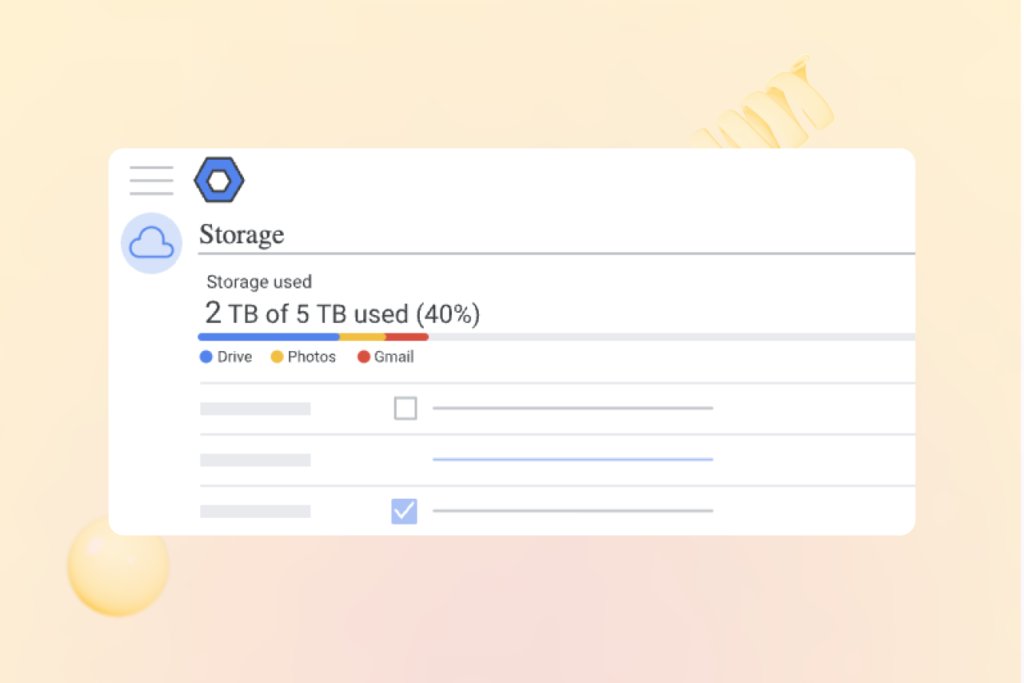
I. How much storage space do you get by default?
Google Drive for Work gives each user 30GB of space in its basic plan and goes up to 5TB in its enterprise plan. In contrast, Google Apps Unlimited does not put any restrictions on the space available to your users.
Note: Your Gmail messages (including any messages in the Spam or Trash),files on Google Drive (except Google Sheets, Docs, and Slides),and Google Photos (if saved on the ‘original size’ setting) will count towards your space quota. However, files other users have shared with you do not count towards your storage quota.
You can find more information on Google Apps storage limits here.
II. How to increase storage space?
If your users want more space, you have 3 options:
- Upgrade to Google Apps Unlimited for unlimited storage space.
- Purchase more storage licenses via your Admin console, and assign the new licenses to specific users.
- Purchase individual Drive storage if that option is enabled in Admin Console.
III. File size limits
Google Drive puts a 5TB restriction on the maximum file size for any data your users wish to store. Apart from this, there are separate restrictions on the sizes of Google’s formats (Docs, Spreadsheets, etc.),which are explained later in this article.
Recommended read:
22 Google Drive add-ons to improve team productivity.
4. Google Apps limits and usage quotas
Google Apps are a suite of powerful cloud-based tools, used for communication, collaboration, and productivity. However, just like Gmail and Google drive, each of these apps has specific usage quotas to ensure efficient usage and smooth performance.
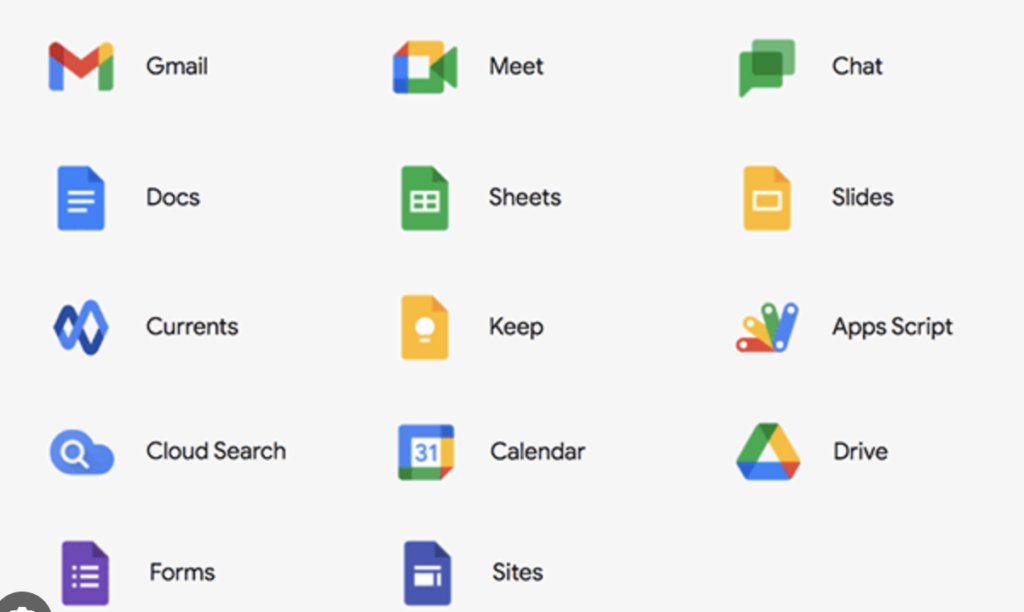
I. Google Calendar
Users are barred from creating ‘too many events’ (over 10,000) in an unspecified ‘short time.’ Any user exceeding this limitation will lose edit access temporarily. Besides this, Google won’t let you create more than 60 new calendars (with the same ‘short time’ proviso) and prohibits sharing them with more than 750 people in a short period of time.
Google also limits sharing calendar invites to more than 10,000 external people. If users do so, they might be unable to send invitations to people outside their organization for a few hours.
II. Google Contacts
Heavy users of Gmail have another issue to consider – limits placed on Google Contacts. You can save up to 25,000 contacts in your account, with total storage space for contacts limited to 20MB (User photos do not count towards this).
Other restrictions include a maximum of 500 fields, a 1024-character limit for each field, and 128KB storage for each contact.
Also, each user has access to 200,000 shared external contacts or 40MB of storage – whichever condition is met first.
III. Google Chats
Be it for 1:1 communication or team discussions, Google Chat has come up to be an easy collaboration app and is used by many businesses on a daily basis.
However, when it comes to group conversations in Google Chat, a maximum of 400 people can be added to any group. Also, external users in Google Workspace organizations that have not turned on chat won’t be reachable through the feature.
IV. Google Groups
Google Groups allows users to easily connect and communicate with a group of people through one single email ID, making it perfect for coordinating team projects, discussing topics, or organizing events by keeping everyone on the same page. Users can create a group email ID and add people in them so that they are notified when a group email is received.
Google Groups is a favored tool for supporting a community around your product – whether for clients, external users, or employees. This useful collaboration tool also has several restrictions in place; A few of these are – 300 email messages every 5 minutes; users can send a maximum of 1800 messages per hour to a specific group, and there can be 5000 external message recipients per group per day.
For more information on Google Groups, check out the Groups help page.
V. Google Sheets, Docs, Slides, and their collaboration limit
- Google Docs: Files are limited to 1,024,000 characters, while files converted from other formats have a 50MB limitation.
- Google Sheets: You can have a maximum of 10 million cells in a Google Sheet. Additionally, anyone intending to use a Sheet for heavy number crunching should be aware that Google Sheets will time out if the calculations and formulas become too complex. While no limit has been explicitly laid out, Google will warn you that your spreadsheet is about to hit its limits.
- Slides: Each presentation (including those converted to Google Slides) can be a maximum of 100MB.
Additionally, when it comes to collaboration in these apps, a maximum of 100 users can simultaneously collaborate (edit, make changes, leave comments, etc.) on a single file.
5. Usage quotas for the Google Apps API
Google Workspace has some predetermined limits set on the number of API requests that can be made within a specific time frame. This is specifically important for developers to know to create seamless integrations with Google Apps services.
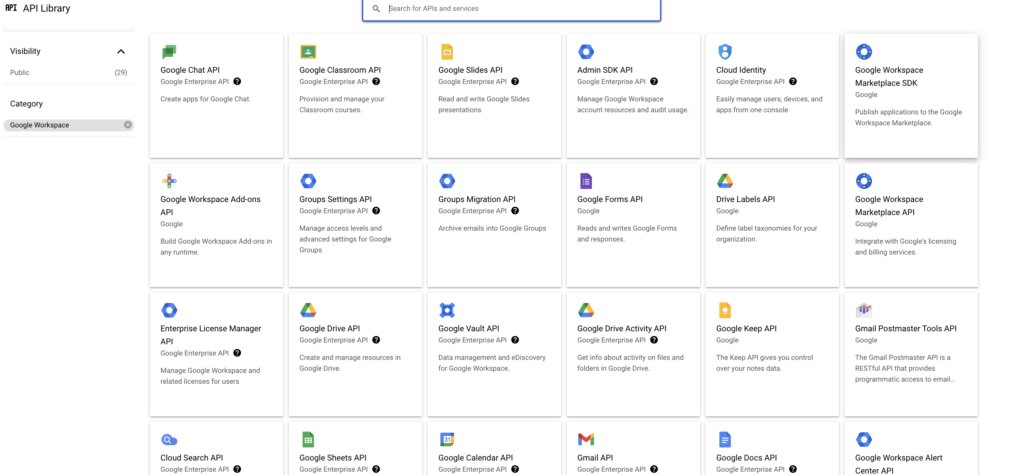
I. Gmail API
If you’re using apps (especially custom ones) that hook into Google’s APIs, you’ll need to take special care to ensure uninterrupted service. The Gmail API has a 1,000,000,000 quota units per day limit, with a per-user-per-second limit of 250 quota units. Quota units are calculated according to the API calls you use. For example, ‘labels.list’ has a quota of 1, while ‘drafts.send’ has been assigned a quota of 100.
For more detailed information on how various API functions affect your quota, head over to the Gmail API Usage Limits page.
II. Google Calendar API
The Google Calendar API has a limit of 1,000,000 queries per day; however, it is also possible to request a hike in this quota via your Developer Console.
III. Google Tasks API
Google Tasks is one of the least popular Google Apps tools, mainly due to its limited functionality. However, if your organization uses the Tasks API for your custom apps, you’ll have to stick to 50,000 queries a day limit.
However, if you need to increase the capacity, you can do so from your Developer Console.
IV. Google Apps Script
Google Apps Script is an easy way to extend the functionality of various Google Apps services by letting you develop add-ons for your employees. Using Apps Script also brings few limitations to the table – for example, only 1500 Google Docs can be created daily, while you can add up to 2,000 contacts daily.
Here’s a list of quotas for all the Google Apps features.
6. Google Workspace Account Limitations
Every admin should be aware of these account restrictions to ensure a well-managed and optimized work environment.
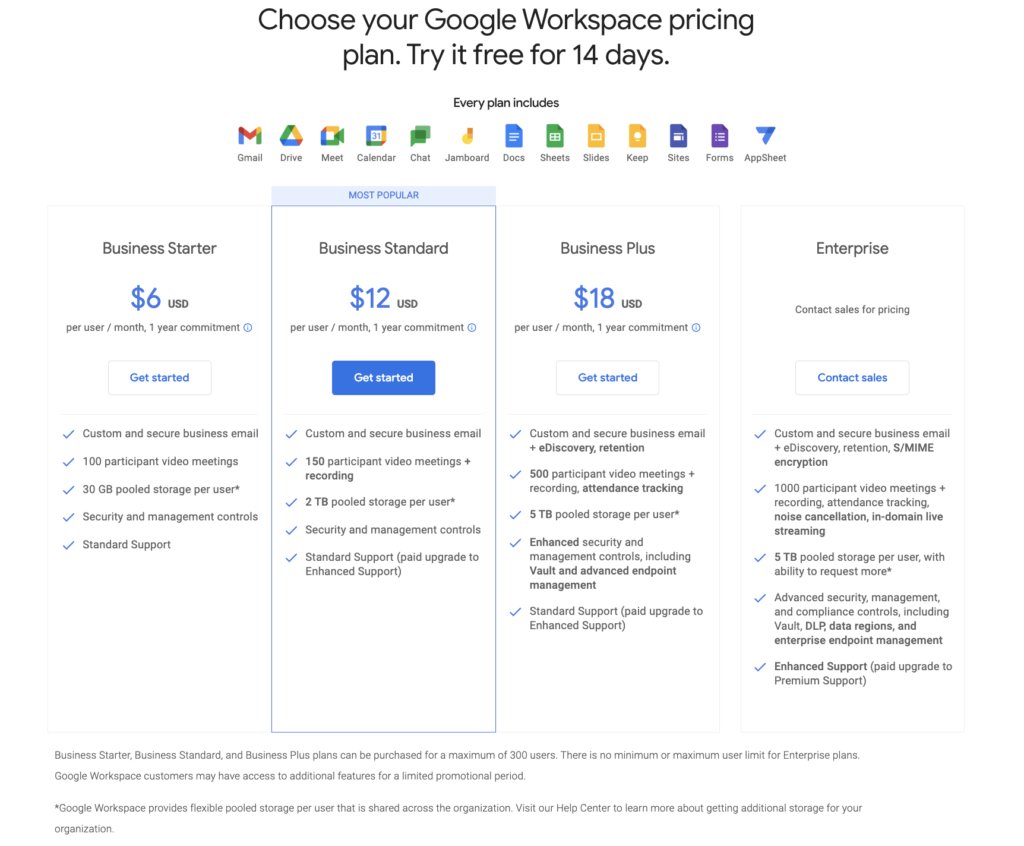
I. User account limits based on subscription tiers
The maximum number of accounts that can be created depends on your organization’s subscription plan.
For instance, the starter, standard, and business plus plans allow 300 user accounts. However, the Enterprise plan offers to create unlimited user accounts, allowing organizations to scale their user base without restrictions.
II. Managing users to optimize Google Workspace usage
- Active user management: Regularly review and manage user accounts to ensure that only active employees or members can access Google Workspace resources. Deactivate or delete users who are no longer part of the organization, freeing up storage space and licenses for active team members.
- Upgrade as needed: If your organization is approaching its user limits, consider upgrading to a higher Google Workspace subscription tier. Upgrading will grant additional storage space and user account allowances, accommodating your organization’s growing needs.
Handling Account Limit Warnings and Suspensions
Now, imagine this: you or your users are working on something important, and suddenly, you get hit with a warning, or, worse, your account gets temporarily suspended. Don’t panic; let’s break it down.
First, for temporary account suspensions, find out what caused it. For instance, it could be because you hit a sending limit or exceeded storage limits.
It’s like a little wake-up call from Google telling you to slow down or clean up a bit. To regain access, follow these steps. It’s like getting your account back from a little time-out:
- Review the Suspension Notice: Check your email or Google Workspace Admin Console for the suspension notice. It’ll tell you why your account got suspended and how long the suspension is for.
- Fix the Issue: Address the problem that caused the suspension. If it’s the sending limit, wait for the suspension period to pass, or reach out to Google Support.
- Clean Up and Organize: If it’s a storage issue, tidy up your files, delete old stuff, or move data to Shared Drives.
- Request Reinstatement: Once you’ve fixed the issue, you can ask Google to reinstate your account. Submit a reinstatement request through the Help Center or Admin Console, explaining what you did to resolve the problem.
Account suspensions are not the end of the world. Google just wants to keep everything running smoothly for everyone. Follow the rules, clean up if needed, and you’ll be back on track in no time.
Google Workspace is an easy-to-use and intuitive suite for businesses. Being aware of its limits and quota will ensure that you and your users have a hassle-free experience at work.
Speaking of Google Workspace, if you are looking for a collaboration tool that works right from Gmail, try out Hiver. To know more, schedule a free demo.













